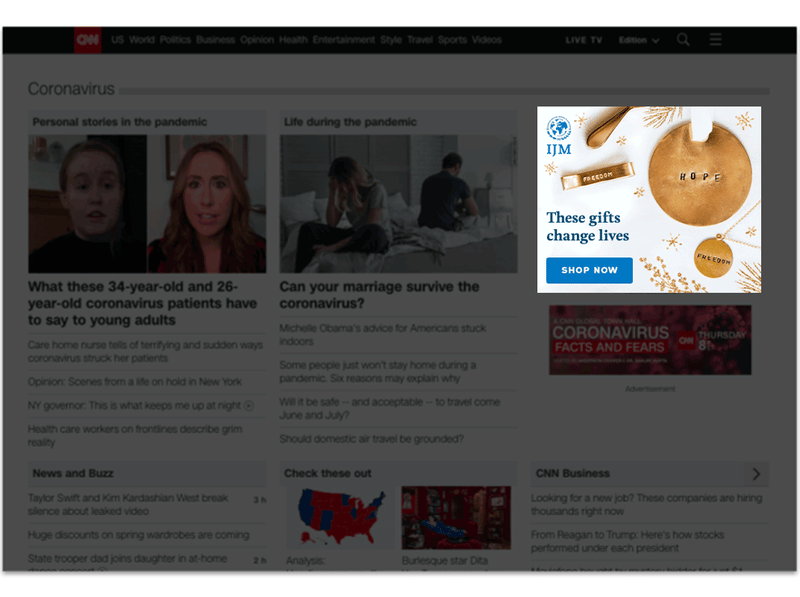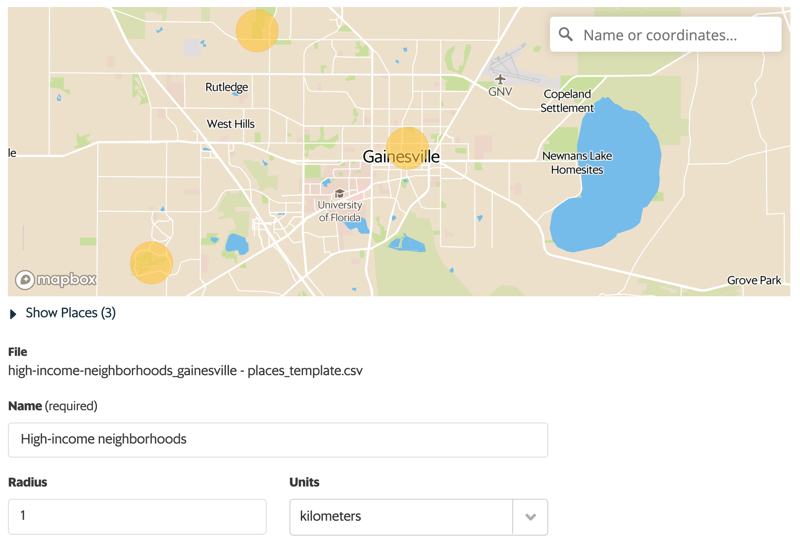Nonprofit Marketing | Complete Guide to Further Your Mission
As a nonprofit professional, you want the world to know about your mission. You’re passionate about the cause, so you want to share that passion with the world. Sharing your mission is also beneficial to your organization’s well-being. Marketing your nonprofit encourages donations and increased engagement in the various opportunities you provide for community members to get involved.
Supporter engagement and contributions help keep your organization afloat —therefore, your marketing efforts play a key role in ensuring your nonprofit operations are impactful and even possible.
In this guide, we’ll discuss what nonprofit marketing is, why you need it, important tools for promotional efforts, and how your nonprofit can make the most of your promotional efforts through effective planning. We’ll cover these through the following points:
- What is Nonprofit Marketing?
- Steps to Craft a Nonprofit Marketing Plan
- Nonprofit Marketing Channels
- Analyzing Your Nonprofit Marketing Results
Ready to dive into nonprofit marketing and the ways that your nonprofit can make the most of your own strategies? Let’s get started.
What is Nonprofit Marketing?
Nonprofit marketing is, in short, the methods nonprofit organizations use to gain attention for their cause. It refers to outreach activities that nonprofits use to solicit donations from supporters, recruit advocates, and engage volunteers.
If marketing isn’t a prominent part of your nonprofit’s strategy, you run the risk of missing out on engaging individuals who have the potential and drive to get involved with your cause.
Therefore, by building out an effective marketing plan, you can reach prospective supporters and inform them about ways they can get involved. Plus, you’ll encounter a number of incredible benefits and opportunities through your marketing efforts. Some of the benefits that accompany an impactful nonprofit marketing strategy include the following:
- Additional revenue generation. Marketing campaigns help organizations like yours reach potential donors and inform them about your latest fundraising campaigns, earning additional revenue.
- Increased event attendance. Use your marketing strategy to spread the word about your nonprofit’s events. With more attendees, you can gain valuable face-to-face time (or screen-to-screen time for virtual events) with important supporters and engage more community members in your mission.
- Increased brand recognition. Supporters often require multiple “touch points” before they decide to contribute to a nonprofit’s cause. Touch points refer to any contact you make with supporters before they give to your cause. This means you must build several outreach opportunities simply to tell supporters about your cause and let them know who you are.
- Volunteer recruitment. Nonprofits often need volunteers to drive initiatives forward and make the most of various campaign strategies. A marketing strategy helps you recruit these essential supporters and inform them about your organization’s engagement opportunities.
Essentially, when your nonprofit develops an effective plan for your organization’s marketing strategy, you’ll have increased visibility and access to the tools and resources necessary to continue driving your mission.
Steps to Craft a Nonprofit Marketing Plan
Trying to move forward with a marketing initiative without a proper plan is like going to the airport without a destination in mind. You wouldn’t have a place to stay, activities to do, and you would likely overpay for your ticket to a less-than-ideal location. If you don’t have a marketing plan, your team members won’t know what they’re working toward, what platforms to use, or how to proceed.
On a happier note, by building a marketing plan, you’ll be much more likely to achieve your goals, raise more money, and attain the resources necessary for organizational growth.
Below, we’ve determined the five most important steps necessary for creating a marketing strategy that promotes your mission to the right people at the right time.
1. Analyze Your Audience
The first step to create an impactful marketing strategy is to identify the members of your audience so that you can target their interests in your messaging. Although email open rates in the nonprofit sector increased from about 20% to 25% in 2019, this means that this marketing channel still only reaches around a fifth to a quarter of your audience. You’ll reach more of them by personalizing your messaging to their specific needs and interests.
When supporters engage with your organization, ensure your nonprofit collects data about who they are and their interests in your cause. That way, you can create informed personas that cover the majority of your audience members. These personas will include details about supporters such as their:
- Age
- Gender
- Employment status
- Geographic location
- Household income
- Family status
With this information, you can determine the “average” supporters at your organization. For example, you might determine that your average mid-tier donor is a middle-aged white female with a family, often a stay-at-home parent. Or, you might find that your volunteer base tends to be made up of young, single adults who are fresh out of school and early in their careers.
Create segments based on these personas. That way, you can effectively reach out to entire segments of your audience efficiently and personally. You probably won’t speak to your mid-tier, middle-aged donor the same way that you’ll talk to a young, single adult volunteer. However, if you reach out to all of your mid-tier, middle-aged donors using the same strategy, they’ll be a lot more likely to respond positively to similar messaging.
2. Define Your Marketing Goals
Once you’ve defined your audience, consider what you want them to accomplish for your organization. These will help determine the marketing goals for your annual strategy. Once you’ve developed these goals, you can plan out the steps that are required to achieve them.
Remember that every goal you set should be SMART:
- Specific. Determine what you are trying to accomplish, why it’s important for your organization, which resources you’ll need, and who is involved in achieving it.
- Measurable. You should have a definite metric attached to your nonprofit’s goals. This will help you determine what can be considered successful. Saying you want “more donors” has no quantifiable element. However, saying you want to acquire 100 new donors this month has clear success criteria to meet.
- Attainable. Setting an unrealistically high goal can demotivate your team if they feel their goal is unattainable. If you set it too low, you also may demotivate them by not presenting a challenge. Set a goal that strikes the balance between challenging your staff and ensuring it’s reachable.
- Relevant. When you choose your nonprofit’s goals, make sure they’re relevant to your organization’s mission. You should be able to tie the goal directly back to how it will help your organization’s overarching strategy and accomplish its mission.
- Timely. Goals should always be tied directly to time period. This creates a sense of urgency, making it more likely that people will actually work toward your goal.
An example of a poorly designed goal for your marketing strategy may be:
Acquire more donors throughout the year, expanding the nonprofit’s donor database.
Instead, you might set the following SMART goal for your nonprofit marketing strategy:
Acquire 200 new donors through the online fundraising page on our website by the end of the first quarter of the new year to expand the donor database and start developing new relationships.
This goal is specific (acquiring donors through the fundraising page), measurable (acquiring 200 new donors), attainable (depending on the size of the nonprofit), relevant (can be tied to expansion goals for the organization), and timely (must be done within the first quarter of the new year).
Marketing for nonprofits can help achieve a number of different goals, such as the amount of revenue raised, number of volunteer sign-ups, or number of event registrations.
3. Determine Your Outreach Channels
During this step, your organization will need to determine which channels will resonate with your audience personas and help you meet your goals. Leverage an omni-channel outreach strategy to reach your audience using a number of different channels and gently guiding them to convert.
Donors typically need between 7 and 12 touchpoints from your nonprofit before they’ll give to your organization. However, not all touch points are equally effective. Therefore, you need to make sure your touch points stay with them and reach them on a number of different levels.
Rather than sending twelve emails to a prospective donor and hoping they read each one and decide to give, leverage several channels that work together to create a comprehensive engagement strategy and keep your organization at the top of your audience’s minds.
For example, you might post to social media and send an email regarding an upcoming event for your organization. When someone clicks through your website to the event page, you might trigger a digital advertising campaign. This ensures they’ll encounter your digital ads during other internet searches as well, reminding them to register. Finally, you might send one more email about the event, which may be the turning point, guiding them to sign up for the opportunity.
We’ll dive into all of the different channels you can invest in later on, but understanding how they all work together is key for a successful nonprofit marketing strategy.
4. Craft Key Messages
Even more important than the channels you choose to leverage are the messages that you create for each one. Use the segments that you created about your audience to be sure the messages you craft will resonate with the intended audience.
Keep in mind that the messages you write should take into account both the audience you reach out to and the platform you’re using.
For example, you might write personalized invitations to be a VIP at your upcoming event for your mid-tier and major supporters. Doing so shows them specialized attention and creates an opportunity for personalized conversations during the event. Meanwhile, you might craft another message about the networking opportunities the event will provide for your young professional audience.
Similarly, you should craft specific messages for each platform you leverage. For example, instead of copying and pasting the same social media message across each platform, you might create a specialized hashtag for Twitter, explain the context behind an inspiring photo for Instagram, and tell a long-form story on Facebook. And that’s just social media! Each of your other platforms should also feature unique content that captures your audience’s attention.
5. Analyze Your Marketing Performance
After you’ve put your nonprofit marketing strategy into action, be sure to analyze each of your initiatives’ performance against your goals. This will help you better understand where you met your goals, where you exceeded expectations, and where there may be potential gaps in your strategy.
Better understanding the results of your campaign is your best tool to help your organization determine how you can improve for the future. We’ll discuss further which performance metrics to keep an eye on later in this article.
Nonprofit Marketing Channels
As you build out your organization’s marketing plan, you’ll need to determine the marketing channels that you’ll use to reach your audience. It’s important to choose marketing channels that will work together, so you can take an omni-approach to your outreach efforts.
Supporters should encounter your mission and opportunities to get involved regularly throughout their daily lives. As more and more of our daily activities take place online, that means nonprofits should be sure to use digital platforms and guide prospects to the website.
Below, we’ve discussed some best practices for various nonprofit marketing channels that you can leverage as a part of your own strategy.
Email is the bread and butter of most nonprofit marketing strategies. These messages are sent directly to your supporters’ inboxes, removing the element of chance in whether they come across the message. Instead, it provides a direct line of communication.
As you craft your messages, be sure to leverage segmentation and personalization strategies to capture your audience’s attention. Simply addressing them by name and mentioning their interests will increase open rates and the chances they read the message thoroughly.
It’s imperative to have a set goal for your email outreach. When you know what you want them to accomplish, you can guide your audience toward that goal. For example, you can leverage trigger emails based on supporter behavior to get them more engaged with your cause. If a supporter signs up for your newsletter, you can guide them towards making a donation by sending the following emails over the span of a few weeks:
- A thank you email for signing up for the newsletter with access to your most recent newsletter. This gives them immediate access to what they signed up for from your organization.
- An educational email with a restatement of your mission with a personal anecdote from one of your constituents.
- An email outlining involvement opportunities that they can use to get more involved with your cause. You might include volunteer opportunities and current fundraising campaigns you’re hosting.
- Another educational email about the specific fundraising campaigns you’re currently hosting and how they’ll help you address the mission at hand.
- A solicitation email asking the recipient to get more involved with your mission by donating to your fundraising campaign.
Rather than jumping into the solicitation process directly after someone interacts with your organization, you can set up automated email campaigns that are sent based on an initial trigger such as the one above. This stewards donors and guides them toward taking the next action to get engaged with your organization without requiring your team members to write a new message every week, day, etc. All of this work is completed upfront.
Social Media
Social media is a great platform to use in conjunction with your other outreach efforts. However, you can’t just post an update on your profile and simply hope that your followers see it anymore. Now, there’s specific strategies you can use to get your message in front of the right people at the right time.
Let’s take Facebook as an example. Your nonprofit can use the following tools on the social platform to reach your audience and engage them with your mission:
- Social advertising. Advertising on Facebook has become very advanced, allowing you to choose the demographics of people that you want to see your message. Consider the audience personas that you’ve created as a part of your nonprofit marketing strategy as you fill out advertisement information, then push your message to the most appropriate audience.
- Group invitations. Invite supporters to join groups with other supporters on social networks. The Facebook algorithm prioritizes information and posts shared in groups, which means these updates will be more widely seen and distributed to your audience than posts made on your profile.
- Fundraising campaigns. You can now fundraise directly through most social platforms. Facebook actually covers the payment processing fees for nonprofit organizations, making it a useful tool to raise funds directly for your cause. Generally, these fundraisers are driven forward by your supporters, so encourage them to start a birthday fundraiser or participate in a Facebook Challenge on your organization’s behalf.
- Sharing buttons. Encourage your supporters to continue spreading the word about your mission on their own by providing sharing buttons on your engagement opportunities. Add social media sharing buttons to your donation page so that supporters can tell their friends and family about their generous contributions to your cause.
Of course, be sure to continue posting updates alongside these strategies. Include links back to your website and other online resources to encourage people to continue engaging with other marketing platforms.
On all of your social platforms, be sure to maintain a constant presence, showing your supporters that you’re actively engaged on these platforms and therefore with them.
Take the next step to also encourage your supporters to engage with your organization via social platforms as well. For instance, you might create a hashtag for your upcoming event and encourage them to use it as a part of a competition to win a prize.
Advertisements
One underutilized nonprofit marketing channel is advertisements. Imagine a supporter clicks through to your donation page but gets distracted and leaves part way through filling out their information. Later, they start reading the news online and encounter an advertisement for your organization inviting them to return and finish their donation.
Retargeting advertising campaigns allow you to target people who have visited your website, then leave before completing a specific action. These advertisement campaigns guide your supporters back to pick up where they left off. The ads will appear across the web on other websites they visit.

By leveraging retargeting advertising campaigns, you can remind supporters of their interest in your campaign and provide another touch point. Keep these best practices in mind for your advertising campaign:
- Leverage segmentation. Segment your audience based on the URL of the page they last visited on your site. If they abandon your donation page, your advertisement should target the return to their gift. Meanwhile, if they abandon your volunteer sign-up campaign, the message will encourage their return to volunteer for your mission.
- Use incentives. Where appropriate, use incentives to encourage people to click through the ad and return to their engagement. They often don’t need a big push to come back, but 10% off tickets to your annual event can go a long way to encourage more signups!
- Run your campaigns at the right time. See when people usually engage with your various landing pages throughout the day. Then target your advertising campaigns to show up during those hours. For example, you might find that donations are more likely to be completed after work hours.
- Leverage geofencing. Geofencing allows your nonprofit to target the mobile devices of people in specific locations like colleges, country clubs, yacht clubs, golf courses, high-end retail, expensive neighborhoods, office buildings, and churches or other places of worship.

Advertisements are an impactful marketing strategy that work especially well in conjunction with other nonprofit marketing platforms. For example, if you leverage email marketing triggers in conjunction with advertisements, you’ll essentially guarantee that your supporters will encounter your message on one platform or another, making them unlikely to forget about your campaign.
Word-of-Mouth
Word-of-mouth used to refer to the types of casual conversations people have with one another at places like coffee shops, discussing their interests and hobbies. While this still occurs to an extent, word-of-mouth advertising has started incorporating more digital strategies as well through influencer marketing.
Influencers are individuals who have developed a following and reputation as an expert on a specific topic in a specific industry. They can use their authoritative voices to promote products or activities related to that subject and many people will listen! Consider who your nonprofit’s influencers would be, such as:
- Nonprofit board members
- Your executive director
- Other organization officers
- Event sponsors
- Event speakers
- Community partners
Ask these important individuals to help push your organization’s important campaigns. They may do so by discussing your next fundraising campaign over social media or by even launching their own campaign.
These individuals are perfect candidates for initiatives like peer-to-peer fundraising campaigns and advocacy campaigns because they can drive your message even further and encourage more people to get involved. Reach out and ask your own prospective influencers to get more involved with your campaigns by sharing information about them with their followers.
Direct Mail
Direct mail isn’t dead! Actually, it’s a great outreach channel to use in conjunction with other marketing strategies for your organization. It’s especially useful to drive brand awareness and recognition for your nonprofit. Reports show that 75% of people can recall a brand after seeing direct mail compared to the 44% of digital advertising.
When you use direct mail and digital marketing in conjunction with one another, you increase the likelihood of a supporter recognizing your brand due to both the recognition associated with direct mail and the increased exposure of using multiple outreach strategies.
Consider it this way: You see advertisements all over the internet. So what’s going to help one advertisement stand out over others? If you see the brand you just received a letter about and a digital advertisement directly relates to your interests, you’re bound to pay more attention.
Similar to email, write direct mail letters to specific segments of your audience, targeting their interests and needs.
Be sure to also provide the next action that supporters can take after receiving direct mail. This may be sending in a donation by mail or visiting your website to learn more about other engagement opportunities.
The major hurdle for direct mail is that it’s challenging to encourage someone to take the next desired action after they read your letter. Not only do you need to get them to actually open the envelope, but you also need to make the next action as easy as possible. It’s much easier to ask someone to click through an email than to ask someone to open up their laptops to look up your website.
Direct mail has its strengths, but it’s important to remember that this strategy is best used in conjunction with your digital marketing outreach.
Analyzing Your Nonprofit Marketing Results
Relying on concrete metrics is the best way to ensure your nonprofit marketing campaigns are successful while also identifying opportunities for improvement. Each of your goals should have measurable metrics attached to them that you can keep an eye on throughout the campaign.
Some of the metrics that you might track as a part of your nonprofit marketing strategy include the following:
- Open and click-through rates. What makes you open an email rather than deleting it before opening it? Engaging subjects and email descriptions are key to improving your open rate. Impactful messaging and clear calls to action can boost your click-through rates, which are necessary to drive engagement through marketing channels.
- Website traffic. Website traffic shows how many people are interested in your organization and click through from another channel to learn more. Track what pages they visit and where visitors come from to see what marketing channels are most effective and what campaigns are most engaging.
- Landing page conversions. While you should definitely track who arrives at your landing page (whether that’s your donation page, event registration, etc.), what really matters is how many people click through to engage with your organization. A high arrival rate with a low conversion rate means that you could optimize your landing page further to encourage more visitors to become supporters.
- Social media growth. Push for supporters to follow your social media accounts, share your materials, and join social groups. This opens up new opportunities to get your message in front of them in the future.
- Email list growth. Asking supporters to sign up for your email list is a great way to encourage them to stay involved with your nonprofit. If your campaigns are focused on attracting new supporters, check your email list growth rate to see how you can get more people to engage over this popular channel.
Review the metrics you pull with your marketing team and determine how to use them as a reference point to create better campaigns in the future. Even if you hit all of your goals, that doesn’t mean there aren’t opportunities to improve. You may determine that you need more challenging goals for your next campaign.
When you use a single, comprehensive marketing tool for your campaign, you can easily customize reports and ensure all important information is included. This saves you a lot of time compared to leveraging piecemeal solutions and reports to compare multiple campaigns from numerous systems.
Wrapping Up
Nonprofit marketing is what leads new and existing supporters to your organization’s various engagement opportunities. Therefore, to make the most of the resource, your nonprofit should develop a detailed strategic plan to make sure you’re reaching the right audience with the right messaging.
Once you have a plan in place, support your team with the tools they need for success. When you invest in an all-in-one marketing solution, you can leverage the same platform for your various strategies and initiatives.
Share this
You May Also Like
Related

Digital Marketing for Nonprofits | A Comprehensive Guide

Food Bank Marketing Lessons: Multichannel Marketing That Drives Results


.png?width=730&name=nonprofit-marketing-skinny-cta%20(2).png)
.png?width=730&name=nonprofit-marketing-large-cta%20(2).png)
